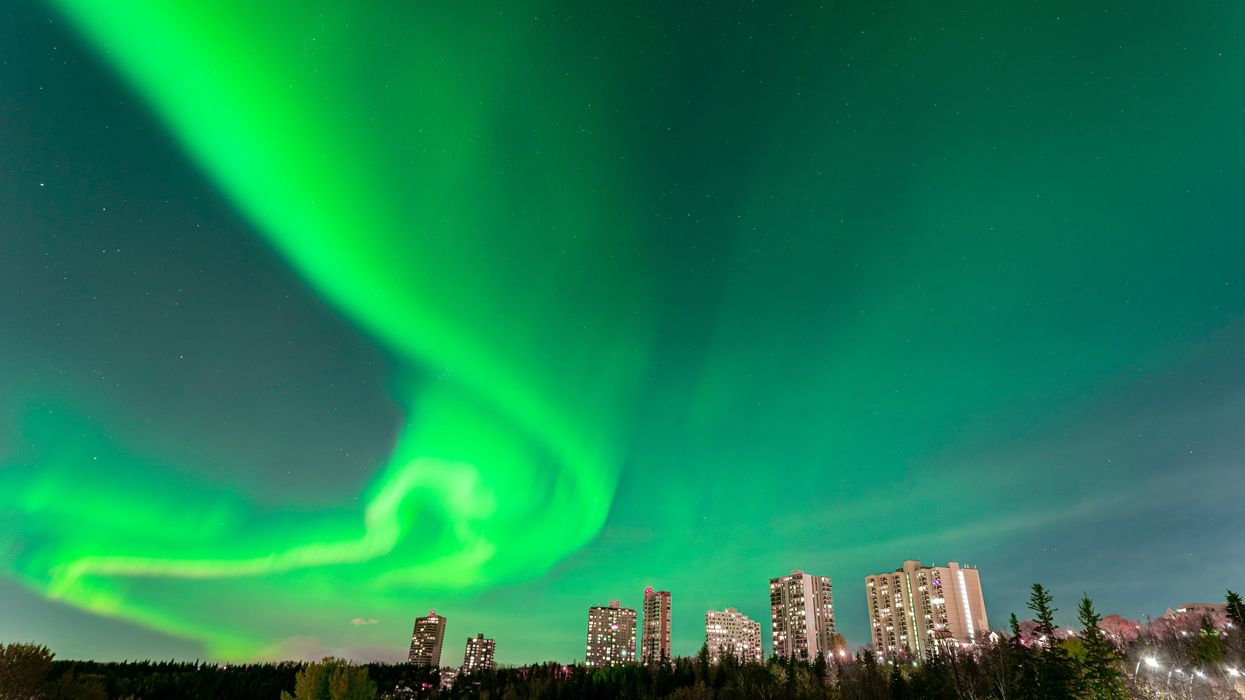The Northern Lights Could Be More Active Across Canada Because Of A 'Rare' Solar Eruption
You might want to keep your eyes on the skies!

Northern lights in the sky above Edmonton.
The northern lights could be visible across Canada and more active thanks to a solar eruption that's being called "rare" and "powerful."
According to northern lights forecasts from Canadian and American organizations, unsettled and active periods are expected as Earth experiences a geomagnetic storm.
NASA shared on March 14 that a "powerful" eruption on the sun known as a coronal mass ejection impacted Earth.
This coronal mass ejection (CME) was travelling at 2,127 kilometres per second which is "unusually fast" and that earned it a rare classification type CME, NASA noted.
So, that has apparently been causing the northern lights to be more active across Canada in recent days and that could continue through the rest of the week.
The Canadian Space Agency's 24-hour forecast that was issued at 11:45 a.m. ET on March 16 calls for unsettled and active periods in polar and auroral areas — Yukon, Northwest Territories, Nunavut, Labrador and northern B.C., Alberta, Saskatchewan, Manitoba, Ontario and Quebec.
For sub-auroral areas — southern B.C., Alberta, Saskatchewan, Manitoba, Ontario, Quebec and the Maritimes — the 24-hour forecast calls for quiet conditions.
Also, the U.S. National Oceanic and Atmospheric Administration is forecasting a G1 geomagnetic storm at night on March 16 and into March 17.
According to The Weather Network, aurora borealis are typically seen in northern parts of the country during a G1 geomagnetic storm but it can also be seen quite clearly in southern B.C., Alberta, Saskatchewan and Manitoba.
While the northern lights appear in the sky over Canada almost every night between August and May, the best time to see northern lights is from December to March because there are more hours of darkness at night.
The Canadian Space Agency has tips for seeing the northern lights which include choosing a viewing spot away from city lights and looking at the sky all around you.
That's because city lights can make low-intensity auroras invisible and the aurora appears anywhere in the sky, not just in the north.
Also, the Canadian Space Agency noted that the northern lights appear a few hours after sunset and then become more intense around midnight.
If you're looking for the best places to see northern lights, northern parts of Canada are top viewing spots and there are quite a few places to see the aurora dance across the sky that aren't far away from big Canadian cities.
This article's cover image was used for illustrative purposes only.
